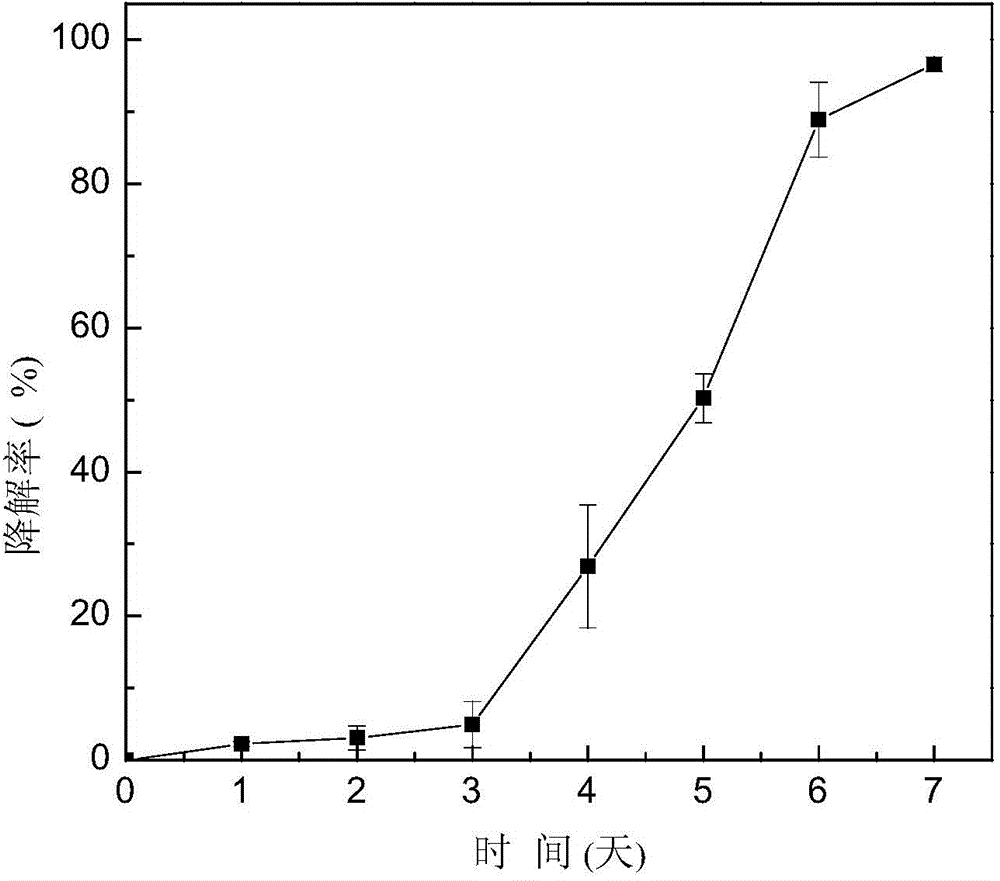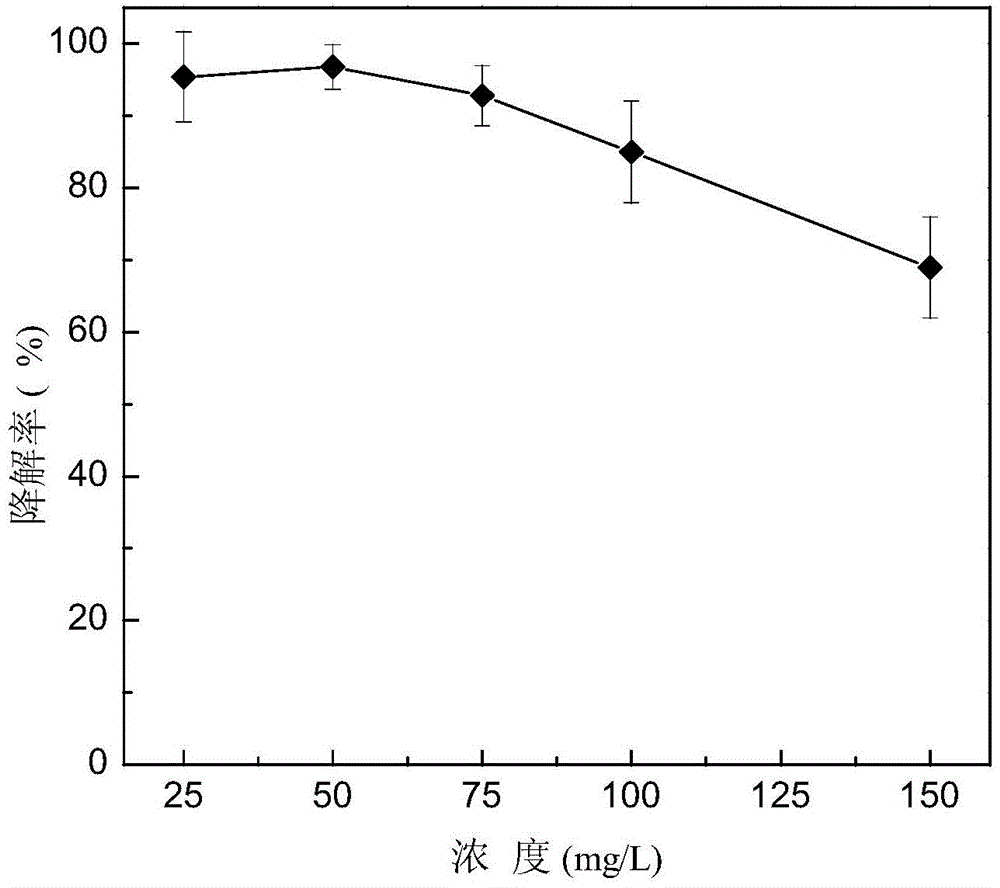Light yellow mycobacterium and its application in degradation of oil components polycyclic aromatic hydrocarbons
A technology of Mycobacterium xanthophytum and polycyclic aromatic hydrocarbons, which is applied in the field of biological treatment of environmental pollutants, and can solve the problems of low efficient degradation effect and the like
- Summary
- Abstract
- Description
- Claims
- Application Information
AI Technical Summary
Problems solved by technology
Method used
Image
Examples
Embodiment 1
[0025] Separation and Degradation Performance of Mycobacterium gilvum CP13
[0026] The activated sludge in the aerobic tank in the coking wastewater treatment process of the Shaogang Coking Plant in Shaoguan City was collected on site, and the pyrene-degrading bacteria were domesticated using a pure inorganic salt system with pyrene as the only carbon source. The initial concentration of pyrene was kept at 50mg / L. Inorganic salt medium (MSM) composition: 100mg / L (NH 4 ) 2 SO 4 , 20mg / L MgSO 4 ·7H 2 O, 10mg / L CaCl 2 2H 2 O; trace elements: 1.2mg / L FeSO 4 ·7H 2 O, 0.3mg / L MnSO 4 ·H 2 O, 0.3mg / L ZnSO 4 ·7H 2 O, 0.1mg / L CoSO 4 ·7H 2 O, 0.1mg / L (NH 4 ) 6 Mo 7 o 24 4H 2 O; Phosphate buffer solution: 2.5g / L K 2 HPO 3 , 0.77g / L KH 2 PO 3 , the pH value is 7.2-7.4. After 5 generations of transfer and repeated domestication, the enriched culture solution was spread on the surface of the pyrene-containing solid inorganic salt medium. After the colonies grew well, ...
Embodiment 2
[0031] Effect of Initial Concentration of Pyrene on Degradation of Pyrene by Strain CP13
[0032] The strain CP13 was prepared into a bacterial suspension with MSM culture medium and the OD was adjusted 600to 0.5, according to the ratio of 10% (V / V), the bacterial suspension was inoculated into the MSM culture solution with pyrene concentration of 25, 50, 75, 100 and 150mg / L respectively, pH=7.2~7.4, so as not to contain The pyrene-containing MSM culture medium of the strain CP13 was used as a blank, and the remaining amount of pyrene in the culture medium was determined after shaking culture in a shaker at 150r / min and 30°C in the dark for 7 days. Depend on image 3 It can be seen that the degradation rates of each initial concentration of pyrene by strain CP13 were 95.40%, 96.79%, 92.79%, 84.99% and 68.94%, respectively. The degradation efficiency of strain CP13 to the initial concentration of pyrene less than 75mg / L was above 90%, and the optimal initial concentration was...
Embodiment 3
[0036] Effect of Temperature on Degradation of Pyrene by Strain CP13
[0037] The strain CP13 was prepared into a bacterial suspension with MSM culture medium and the OD was adjusted 600 to 0.5, inoculate the bacterial suspension into the MSM culture solution with a pyrene concentration of 50 mg / L at a ratio of 10% (V / V), pH = 7.2 to 7.4, and use the pyrene-containing MSM culture solution that does not contain strain CP13 as a blank , respectively placed in shakers at 25, 30, 35, 40, and 45°C, cultured with shaking at 150r / min in the dark for 7 days, and then measuring the remaining amount of pyrene in the culture medium. Such as Figure 4 The results showed that the strain CP13 had a good degradation effect on pyrene at 30-35°C, and the degradation rate was above 88%. The optimum temperature was 35°C, and the degradation rate reached 92.63%. When the temperature was lower than 30°C or higher than 35°C, the degradation rate of pyrene decreased significantly, which may be due...
PUM
 Login to View More
Login to View More Abstract
Description
Claims
Application Information
 Login to View More
Login to View More - R&D
- Intellectual Property
- Life Sciences
- Materials
- Tech Scout
- Unparalleled Data Quality
- Higher Quality Content
- 60% Fewer Hallucinations
Browse by: Latest US Patents, China's latest patents, Technical Efficacy Thesaurus, Application Domain, Technology Topic, Popular Technical Reports.
© 2025 PatSnap. All rights reserved.Legal|Privacy policy|Modern Slavery Act Transparency Statement|Sitemap|About US| Contact US: help@patsnap.com



